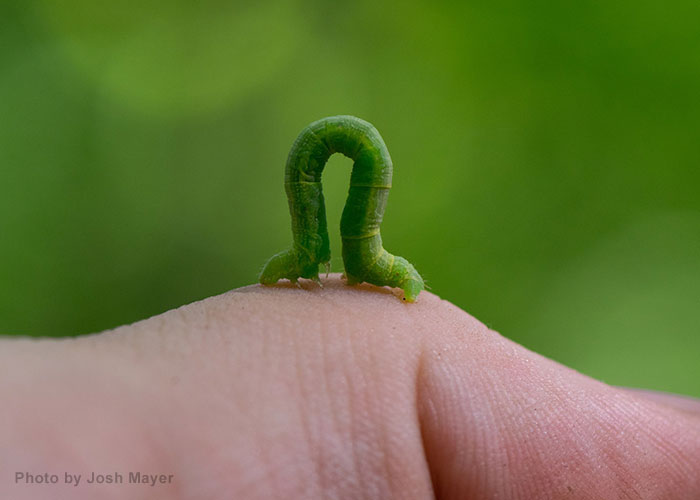It’s cankerworm banding time!

Get to know our growers: Scottree
11.03.19
Atrium Health: First to win Tree Campus Healthcare honors
3.10.20
Charlotte has a history of severe infestations of cankerworms. However, in the last three years cankerworm populations have crashed. Consider these counts from the 163 cankerworm bands the City monitors:2016: 38,948
2017: 32,434
2018: 4,963
2019: 184
Local arborists believe this is because of an extended frost that killed the newly hatched caterpillars effectively stopping the insect’s life cycle, resulting in fewer moths the next season.
Do-it-yourself tree banding
What is the fall cankerworm?
The fall cankerworm (Alsophila pometraria) is an insect native to North America. It is typically found from Georgia to Nova Scotia and west to Texas. It has a four-stage life cycle: egg, pupa, larva (caterpillar) and adult.
How does the fall cankerworm affect trees?
After mating in December, the female moths crawl up trees to lay their eggs on twigs and small branches. As the trees leaf out in the spring, the eggs hatch, leaving small green caterpillars to feed on the leaves. In most cases, the cankerworm will not kill the trees; however, repeated defoliation can weaken trees and make them more susceptible to other stresses, such as age, drought, other insects and disease.
What effect will tree banding have on the cankerworm?
Tree banding in November and December is an effective way of controlling the cankerworm. By applying a glue barrier to the tree trunk, the wingless cankerworm moths are trapped as they climb the tree.
For best results, band between the Thanksgiving and Christmas holidays. It is important to wait until most leaves have fallen from the trees so they don’t get stuck to the tree bands.
Why does Charlotte have a fall cankerworm problem?
For the past 30 years, the cankerworm population in Charlotte has continued to grow. Natural controls have not been adequate to bring the cankerworms to a level that isn’t harmful to our tree canopy. Aerial spraying in 1992, 1998 and 2008, along with other natural factors, reduced the population for several years. The City started a banding program on street trees, while requesting homeowners and businesses to cooperate in 1990.

